As a group of Business Analysts, you have been advised by your senior managers to select two contrasting businesses and provide a report on the following:
- Describe the type of business, purpose and ownership of the two contrasting businesses
- Describe the different stakeholders who influence the purpose of the two contrasting businesses
- Describe how two businesses are organised
- Explain how their style of organisation helps them to fulfil their purposes
- Describe the influence of two contrasting economic environments on business activities within a selected organisation
- Describe how political, legal and social factors are impacting upon the business activities of the selected organisations and their stakeholders.
Introduction:
This assignment focuses on two different types of businesses namely Boots and Oxfam.
- Describe the type of business, purpose and ownership of the two contrasting businesses
Boots – Type of Business
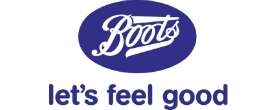
Boots is international pharmacy, led health and beauty groups delivering a range of products and services to customers. It started in 19th century as an herbalist store by John Boot in Nottingham. In1870 the Boots business begins to develop under the management of Jesse Boot. 1883 Boot & Company Ltd formed.1898 Boots Library established. In 1915 Edgar Moss bought his first pharmacy business in Feltham. In the year of 1929 D1 soap factory’s building completed in Beeston site, Nottingham.1935 No7 cosmetics launched.1936 Boots branch opened in New Zealand.
1939 Soltan sun care range introduced. 1947 Boots established to carry out whole sale business in Australia, Canada, and Pakistan and in other East countries.
1949 New Boots factory opened at Airdrie in Scotland to manufacture cosmetics. One new factory in Bombay (India) went into production.1951 first self-service started in London.
In 1954, E. Moss opened its first photographic store in Staines.1969 Boots Launched Ibuprofen in the UK. In 1971 Company renamed the Boots Company Ltd. Achievement of Crookes Laboratories Ltd. In1983, Nurofen launched; following the approval of Ibuprofen. 1985 Boots received the Queens Award for technological achievement for the discovery and development of ibuprofen. Boots Opticians Ltd formed in 1987, with the acquisition of Clement Clarke Ltd and Curry and Paxton Ltd.
Get Help With Your Essay
If you need assistance with writing your essay, our professional essay writing service is here to help!
In the 1990, Boots contract, Manufacturing and Boots Healthcare International were established. In 1992 Electronic Point of Sale computer installation completed in all boots stores. 1997 UniChem Plc. merges with Alliance Santé to become largest pharmaceutical. Advantage card launched. In 2001 Boots Opticians offer the world’s first disposable hearing aid, Songbird. In the year of 2010 Alliance Boots and Pharmaceutical finalise agreement for independently owned pharmacy chain in Sweden under Boots brand.
Ownership of Boots:
Boots is a private company, the UK’s leading pharmacy-led health and beauty retailer. With over 2,500 stores in the UK, ranging from local community pharmacies to large destination health and beauty stores. Boots UK is part of the Retail Pharmacy International Division of Walgreens Boots Alliance, Inc, the first global pharmacy-led health and wellbeing enterprise.
Boots UK Limited(formerly Boots the Chemists Limited), trading as Boots, is a pharmacy chain in the United Kingdom and Ireland, with outlets in most high streets, shopping centres and airport terminals. The company’s former parent, The Boots Company Plc, merged with Alliance UniChem in 2006 to form Alliance Boots. In 2007, Alliance Boots was bought by Kohlberg Kravis Roberts and Stefano Pessina, taking the company private, and moving its headquarters to Switzerland, the first ever FTSE 100 company bought by a private equity firm. In 2012, Walgreens bought a 45% stake Alliance Boots, with the option to buy the rest within three years. It exercised this option in 2014, and as a result Boots became a subsidiary of the new company, Walgreens Boots Alliance on 31 December 2014.
Boots operates over 2,500 stores across the United Kingdom and Ireland ranging from local pharmacies to large health and beauty stores. Boots stores are primarily located on the high streets and in shopping centres. It sells many health and beauty products, and also provides optician and hearing care services within stores and as standalone practices. Boots also operates a retail website and runs a loyalty card programme branded as the Boots Advantage Card.
Mission and Purpose of Boots
The mission of Boots is to be the first choice for pharmacy, health and beauty – caring for people, customers and communities everywhere.
Boots’ purpose is to provide goods and services to help their customers look and feel better than they ever thought possible. Boots Company is very well known in different department such as in production of biggest health and beauty brand, Botanic, Ibuprofen, and No.7. And it also works hard in customer services. Boots Company encourages the latest technologies and modern formulas to achieve the goals and objectives with new strength of the innovative approaches and creativity. So, the cost control is also the important factors in the company to remain in the business world.
The Organisational Structure of Boots is illustrated in figure 1 below:
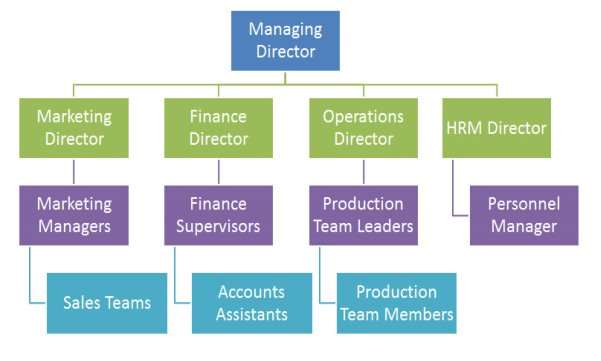
2nd Organisation: Oxfam International
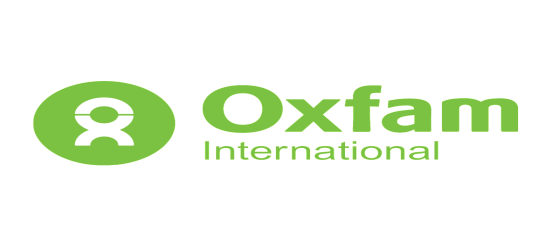
Oxfam International was formed in 1995 by a group of independent non-governmental organizations. Their aim was to work together for greater impact on the international stage to reduce poverty and injustice.
The name “Oxfam” comes from the Oxford Committee for Famine Relief, founded in Britain in 1942. The group campaigned for food supplies to be sent through an allied naval blockade to starving women and children in enemy-occupied Greece during the Second World War.
As well as becoming a world leader in the delivery of emergency relief, Oxfam International implements long-term development programs in vulnerable communities. We are also part of a global movement, campaigning with others, for instance, to end unfair trade rules, demand better health and education services for all, and to combat climate change.
Today, there are 19 member organizations of the Oxfam International confederation. They are based in: Australia, Belgium, Canada, Denmark, France, Germany, Great Britain, Hong Kong, Ireland, India, Italy, Japan, Mexico, The Netherlands, New Zealand, Quebec, South Africa, Spain and the United States. The Oxfam International Secretariat is based in Oxford, UK. The Secretariat runs advocacy offices in Addis Ababa, Brussels, Geneva, New York and Washington DC.
Vision, Mission, Values, Purpose and Beliefs of Oxfam
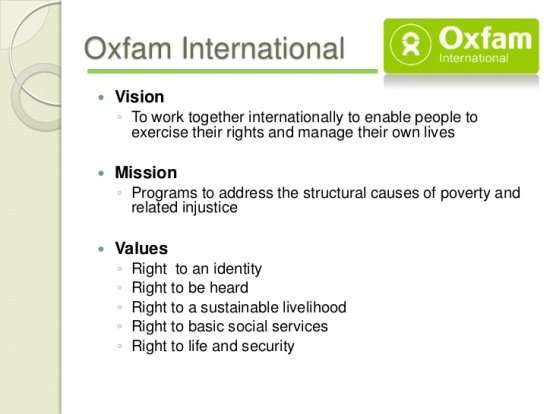
Oxfam vision is a just world without poverty. Oxfam wants a world where people are valued and treated equally, enjoy their rights as full citizens, and can influence decisions affecting their lives.
The purpose of Oxfam is to help create lasting solutions to the injustice of poverty. Oxfam is part of a global movement for change, empowering people to create a future that is secure, just, and free from poverty.
Oxfam believes that everyone has a right to realize their potential, and to live free of poverty in a secure and more equitable world. They believe that with the necessary action and political will, this world is possible.
Oxfam also believes that people have a right to life and security; to a sustainable livelihood; to be heard; to have an identity; and to have access to basic social services. Oxfam subscribes to all international covenants on rights, and to the Universal Declaration of Human Rights.
Type of ownership and Legal Form
Oxfam is an International non-governmental organization. An international confederation of charitable organizations focused on the alleviation of global poverty.
Oxfam International is a Confederation of thirteen independent aid, development and advocacy organizations. Oxfam India and Oxfam Japan are also associated with OI, with both organizations set to become full affiliates in the near future. Rostros y Voces, a not-for-profit organization based in Mexico currently has observer status in anticipation of becoming fully affiliated to OI.
The Confederation is supported by the Secretariat, a not-for-profit Foundation with its registered office in The Hague, Netherlands.
The purpose of the Secretariat is to provide leadership, coordination and facilitation to the Confederation as a whole, and to provide individual support to Affiliates where necessary.
Oxfam International is governed by three constitutional documents:
•The Constitution which governs the actions of Secretariat;
•The Code of Conduct which regulates the use of the Oxfam brand and criteria for membership of the Confederation;
•The Rules of Procedure which relate to the governance of the OI Board, affiliation of new members and dispute resolution practice within the Confederation.
Each Affiliate subscribes to the constitution through an affiliation agreement which governs the relationship between OI and the Affiliate, ensuring a commitment to OI’s objectives.
Oxfam has a great presence on social media including Facebook and Twitter.
Organizational Structure of Oxfam
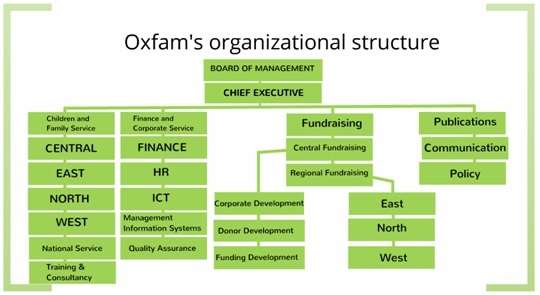
Oxfam International Board
The OI Board comprises the Executive Director, Chair of each Affiliate, and the Oxfam International (OI) Chair. The Affiliates’ Chairs are voting members and are non-remunerated. The Executive Directors and the OI Chair are all non-voting-members. The Board also elects the Deputy Chair and Treasurer from among its voting members. The Board is responsible for ensuring that OI is accountable, transparent, and fit for purpose. The constitution and Strategic Plan are also approved at Board level. The Board takes recommendations from Executive Directors and ensures that the Confederation is working to its agreed aims. The Board also agrees membership of the Confederation, selects the Honorary President, the Honorary Advisor, the Board Officers and the OI Executive Director. A number of subcommittees with expert members are also mandated by the Board to assist with specific issues.
Executive Directors
The Executive Directors (EDs) include each Affiliate’s Executive Director and the OI
Executive Director. The latter works with Affiliate Executive Directors as a peer in order to reach consensus and form recommendations to be made to the OI Board. As well as Affiliate responsibilities, the EDs form the non-voting half of the OI Board.
They operate as a group to take those decisions which are not required to be tabled at the Board.
They agree the operating architecture of the Confederation and have overall responsibility for initiating and management of the Strategic Plan. They are responsible for organizational alignment, OI budgetary decisions and alignment of their own Affiliates to achieve OI’s objectives.
Global Team
The Global Team (GT) consists of up to 16 senior staff, nominated by Affiliates and selected on merit by the EDs. The GT is accountable to the EDs and membership is subject to a fixed renewable term to ensure rotation. The GT is responsible for the implementation of the Strategic Plan by directly supporting delivery groups and streamlining Affiliate operational plans in areas such as campaigning, advocacy, marketing and programs. Within this remit the GT are required to promote monitoring, evaluation and learning initiatives within the Confederation.
Countries of Operation
Oxfam works in more than 90 countries, with development programmes in Africa, the Middle East, Latin America, across Asia and in parts of Eastern Europe. Under Oxfam single management system, each of those countries is managed by one Oxfam affiliate to develop programmes jointly.
- Describe the different stakeholders who influence the purpose of the two contrasting businesses
Stakeholder
A stakeholder is referred to as anybody who has an interest in an organization or business. An organization’s actions, objectives and policies can be affected for stakeholders. There are two main types of stakeholders, namely primary stakeholders – who are usually internal stakeholders engaged in economic transactions with the business such as customers, suppliers, creditors and employees.
Secondary stakeholders on the other hand are usually external stakeholders who may not necessarily engage directly in economic exchange with the organization, for example, the general public, the government, local communities, activist groups, business support groups and the media.
Influence of different stakeholders on Boots and Oxfam
There are both internal and external stakeholders for Boots and Oxfam. Examples of stakeholders include the following:
- Owners or shareholders
- Managers
- Employees
- Customers
- Suppliers
- Governments
- The Local Community
Owners:
Every given organisation is owned by an individual, partners or a group of shareholders who form a company. In relation to both Boots and Oxfam, they have a great influence on the direction of the organisations. These include the recruitment, selection and employment of workers and volunteers, identifying suitable premises and procuring machinery, equipment, raw materials and resources. The owners have to take these decisions to ensure that the organisations function according to their purposes and objectives as well as remain profitable in motivating their staff to maximise their performance, however, Oxfam in this case is a charitable organisation whereas Boots is a profit making organisation.
Employees/Volunteers
Employees in the case of Boots and Volunteers in the case of Oxfam are relevant stakeholders. Their performance and how tasks are carried out may affect the organisation’s objectives. Achieving tasks may require teamwork and therefore they must have good interpersonal skills. And they must follow organisational policies and procedures.
The employees of Boots to a large extent may organize themselves in a workers union and ensure that the management provides favourable working conditions, pay structure, flexible shift patterns, among other things. Also, employees in some ways decide how profitable a business would be and can impact on the company’s service delivery. Oxfam volunteers and affiliates on the other hand also have much impact on the successful operations of the organisation in meeting the objectives of the charity.
Suppliers: Suppliers who supply the goods and services that are provided by the organisations to their customers are key stakeholders for these organisations. They are an example of external stakeholders.
Costumers are other types of stakeholders. They are the supporters of the business in the economy and they purchase goods and services to satisfy their needs and wants. Customers are influential and very important to any organisation because when their needs are not met, they go elsewhere and the business looses patronage. Satisfied customers are crucial to the successful operation and growth of Boots as well as Oxfam. Customers are also able to influence the direction of the organisation based on their taste and demands. This helps the organisations to identify changing trends in the market. In the business environment, especially in the case of Boots, the consumer is considered as a priority and influences the objectives of the business. Due to increased competition, it very important the that organisations keep their customers satisfied by offering them good quality products and services.
Find Out How UKEssays.com Can Help You!
Our academic experts are ready and waiting to assist with any writing project you may have. From simple essay plans, through to full dissertations, you can guarantee we have a service perfectly matched to your needs.
View our academic writing services
Governments are important stakeholders. The government makes legislations and regulations which govern all organisations and businesses including Boots and Oxfam, for example, Health and Safety Act, Equality Act, Disability, etc. In the case of Boots, the percentage of business rate to pay the government might influence an increase in the prices of their goods and services. Local authority regulations on licence of premises where they operate may influence the opening and closing times of these organisations. Consumer Protection legislation affects how the organisations relates with their customers. Boots on the other hand is required to comply with government regulations in relation to their own organisational objectives.
A change in regulation requires a corresponding change in the way the organisations operate, for example, regulations on taxations laws, VAT, immigration, importations, farming etc have effect on the operations of the organisations.
The Local Community: The local communityhave a great interest in localbusinesses as they provide them with jobs and training opportunities. Local communities will mainly depend on local shops and organisations and other suppliers. By their activities and operations some organisations create pollution, traffic congestions and noise, however, the local community will not want these to happen as it causes health risks to them.
- Describe how two businesses are organised: Boots and Oxfam
- Explain how the style of the organisations help them to fulfil their purposes
Organisations or Businesses like Boots and Oxfam are normally organised by their functions, for example, HR department, marketing department, production department, sales department, accounts department, etc, depending on the size of the organisation. The reason is that, grouping them together allows the functions to benefit from specialisation and division of labour which then results in lower unit costs and a greater efficiency in achieving organisational objectives, whereas in some extreme cases, it may also lead to departmental rivalry.
Larger organisations might have a number of businesses within the whole company. This would be coordinated by a Head Office, where all the major decisions are made.
This explains why various organisations are organised structurally as follows:
Organisational structures
Hierarchical structures
Flat Structures
Tall Structures
Organisational structures
An organisational structure is a system used to define a hierarchy within an organisation.
They can be structured by:
Function – the part of an organisation designed to meet a purpose.
It has the advantage of each department focusing on its own department, but a disadvantage of creating a gap between top and bottom of the chart, and coordination may take too long.
For example, Boots has the HR department which is responsible for hiring and firing.
Geographical area– where the business is located. The advantage is that it serves local need better, but may result in conflict between local and central management.
Product group – having separate divisions, with an advantage of helping people meet customer needs, however, there may be duplication of functions.
Type of consumer – different areas that deal with different types of customers.
Flat organisation structures are structures with fewer levels.
Advantages
• easier decision making
• greater communication
• people can take more responsibility
Disadvantages
• many people will be involved with decision making
• limited to smaller organisations
Tall Structures
A tall structure is a long chain of command. As the organisation grows, the structure grows taller where each manager controls a certain group of people.
Advantages
• Bigger opportunities for workers to reach higher levels of the structure.
Disadvantages
• More people reporting to the top manager
Hierarchical structures
Hierarchy is a system in which members of an organisation are ranked according to authority.
Advantages
• Employees know who to report to when there is an issue or there are any questions that need to be asked.
• Helps new employees by letting them know who they are working with.
• Helps to organise the workload.
Disadvantages
• organisational charts have to always be updated but keeping them up to date can be hard especially for large companies
Hierarchy is a system in which members of an organisation are ranked according to authority. A hierarchical structure is a pyramid-shaped structure that only has one person at the top and very few individuals that can directly report to him/her.
Advantages
• it is easy to see what each team is called and how many members each team has and how they relate to the other members in the team
Disadvantages
• it is harder for people that are on the lowest level of the structure to get to directly report to the one at the top
A business whose decision-making originates from one place only is known as a centralised organisation. Normally the Head Office will decide on the major elements of strategy, no matter where the manufacturing plants and sales teams are positioned around the country or globe. This means that there are good opportunities for economies of scale.
Other businesses, especially multinationals will opt for a more decentralised organisation – where the individual businesses within the whole company group, make decisions for themselves. This means that there is more opportunity to react to the changing marketplace, which is one of the advantages of a small firm. However there is a possibility that these organisations which may operate in different parts of the world like Oxfam might be duplicating research or not bargaining in such a strong position as a bigger overall company.
When a business reaches a certain size it might split into different departments.
These departments will specialise, employing people with expertise in these areas.
The main departments in a well-established business are typically:
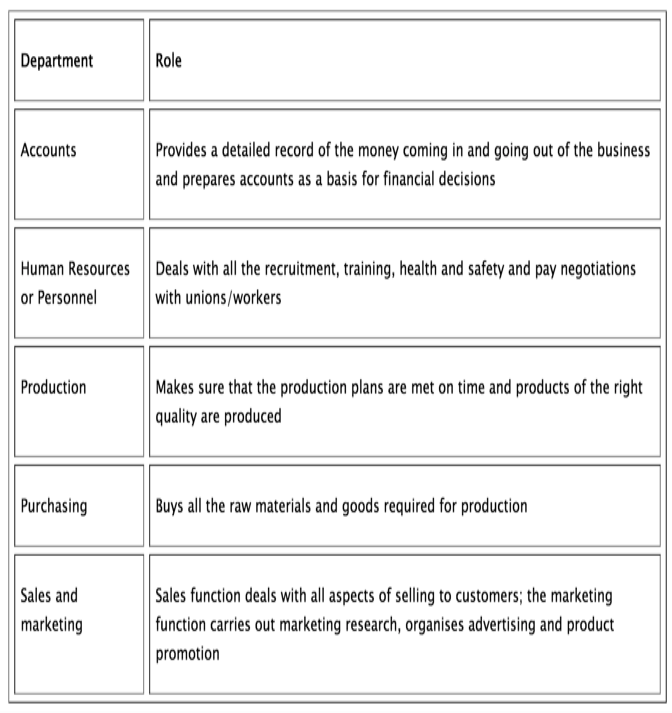
A hierarchical style organizational structure means that there will be fewer people at the top of the company managing the people below. It allows the directors to make the key decisions regarding the operations of the organisation.
- Describe the influence of two contrasting economic environments on business activities within a selected organisation
Different economic environments affect business activities within organisations such as Boots and Oxfam, some of them are discussed below:
Demand
Demand is defined as the quantity of goods or services that consumers and businesses or customers are willing and able to buy at a given price in a given time period. Market demand is the sum of the individual demand for a product from buyers in the market, in this case, the products or goods and services of Boots and Oxfam.
Supply
Supply is an economic concept that describes the total amount of a specific goods or services that are available to consumers. Supply can also relate to the amount available at a specific price or the amount available across a range of prices if displayed on a graph. This is illustrated in the diagram below:
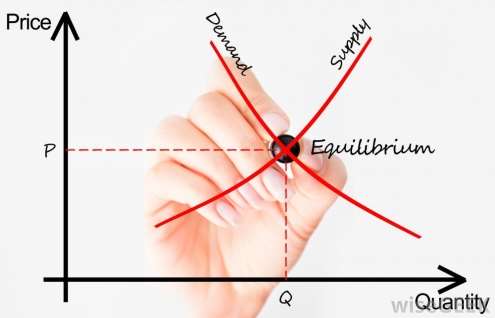
As seen in the diagram above, considering demand and supply together, the supply relationship and demand relationship basically reflect each other at equilibrium, and the quantity supplied and quantity demanded intersect and are equal.
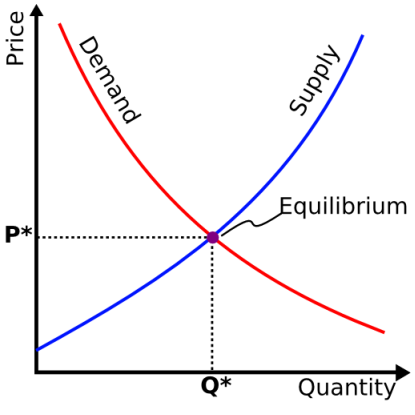
As in the diagram above, supply is illustrated by the upward blue sloping line and demand by red downward sloping line at a price of P* and a quantity of Q*. The quantity of Boots and Oxfam goods and services demanded and the supply intersect at the Equilibrium Price. At this stage, suppliers are selling all the goods that they have produced and consumers are getting all the goods that they are demanding. This is the optimal economic condition, where customers/consumers and producers of goods and services are equally satisfied.
Change in Demand for Goods and Services provided by Boots and Oxfam
A change in demand will cause equilibrium price and output to change in the same direction.
a). A decrease in demand will cause a reduction in the equilibrium price and quantity of a good.
The decrease in demand causes excess supply to develop at the initial price.
Excess supply will cause price to fall, and as price falls producers are willing to supply less of the good, thereby decreasing output.
b). An increase in demand will cause an increase in the equilibrium price and quantity of a good. The increase in demand causes excess demand to develop at the initial price.
Excess demand will cause the price to rise, and as price rises producers are willing to sell more, thereby increasing output.
Change in Supply of Goods and Services provided by Boots and Oxfam
A change in supply will cause equilibrium price and output to change in opposite directions
An increase in supply will cause a reduction in the equilibrium price and an increase in the equilibrium quantity of a good. The increase in supply creates an excess supply at the initial price. Excess supply causes the price to fall and quantity demanded to increase. An decrease in supply will cause an increase in the equilibrium price and a decrease in the equilibrium quantity of a good. The decrease in supply creates an excess demand at the initial price.
Excess demand causes the price to rise and quantity demanded to decrease.
Changes in Demand and Supply of Goods and Services provided by Boots and Oxfam
If demand and supply change in opposite directions, then the change in the equilibrium price can be determined, but the change in the equilibrium output cannot.
A decrease in demand and an increase in supply will cause a fall in equilibrium price, but the effect on equilibrium quantity cannot be determined. For any quantity, consumers now place a lower value on the good, and producers are willing to accept a lower price; therefore, price will fall. The effect on output will depend on the relative size of the two changes. An increase in demand and a decrease in supply will cause an increase in equilibrium price, but the effect on equilibrium quantity cannot be determined. For any quantity, consumers now place a higher value on the good, and producers must have a higher price in order to supply the good; therefore, price will increase. The effect on output will depend on the relative size of the two changes.
If demand and supply change in the same direction, the change in the equilibrium output can be determined, but the change in the equilibrium price cannot.
If both demand and supply increase, there will be an increase in the equilibrium output, but the effect on price cannot be determined. If both demand and supply increase, consumers wish to buy more and firms wish to supply more so output will increase. However, since consumers place a higher value on each unit, but producers are willing to supply each unit at a lower price, the effect on price will depend on the relative size of the two changes.
If both demand and supply decrease, there will be a decrease in the equilibrium output, but the effect on price cannot be determined. If both demand and supply decrease, consumers wish to buy less and firms wish to supply less, so output will fall. However, since consumers place a lower value on each unit, but producers are willing to supply each unit only at higher prices, the effect on price will depend on the relative size of the two changes.
- Describe how political, legal and social factors are impacting upon the business activities of the selected organisations and their stakeholders.
Political, economic, Social, Technological, Environmental/Ecological and Legal (PESTEL) factors/analysis is an effective method to analyze the impact of global forces on UK Business Organizations including Boots and Oxfam.
Political:
There are many external environmental factors that affect the operation of organisation like Boots and Oxfam. These include political, legal and social factors. Politically, many aspects of government policy can affect business as all organisations must follow the law. Managers must consider how upcoming legislations can affect their activities.
The political environment can impact Boots and Oxfam in many ways. It could add a risk factor and lead to a major loss. Political factors have the power to change results. It can also affect government policies at both local and national levels, so Boots and Oxfam should be ready to deal with the local and international outcomes of politics.
Changes in the government policy make up the political factors. The change can be economic, legal or social. It could also be a mix of these factors.
Increase or decrease in tax could be an example of a political element. The government might increase taxes for some companies and lower it for others. The decision will have a direct effect on the business operations of Boots and Oxfam. Government interventions like shifts in interest rate can have an effect on the demand patterns of Boots and Oxfam.
Some factors create Inter-linkages in many ways, for example:
- Political decisions affect the economic environment.
- Political decisions influence the country’s socio-cultural environment.
- Politicians can influence the rate of emergence of new technologies.
- Politicians can influence acceptance of new technologies.
The political environment is
Cite This Work
To export a reference to this article please select a referencing style below:
Give Yourself The Academic Edge Today
- On-time delivery or your money back
- A fully qualified writer in your subject
- In-depth proofreading by our Quality Control Team
- 100% confidentiality, the work is never re-sold or published
- Standard 7-day amendment period
- A paper written to the standard ordered
- A detailed plagiarism report
- A comprehensive quality report
Essay Writing Service
Essay Writing
Service
AED558.00
Approximate costs for Undergraduate 2:2
1000 words
7 day delivery
Order An Essay TodayDelivered on-time or your money back

1857 reviews

